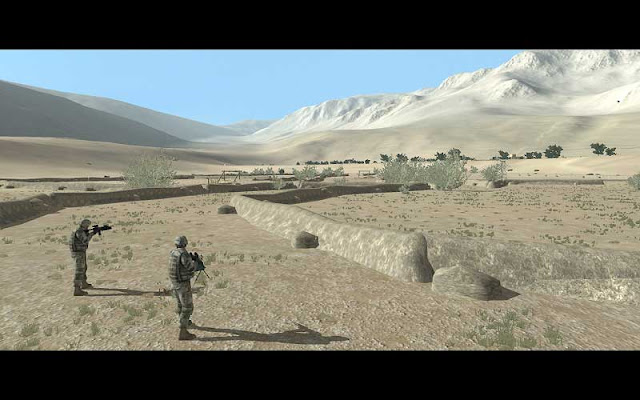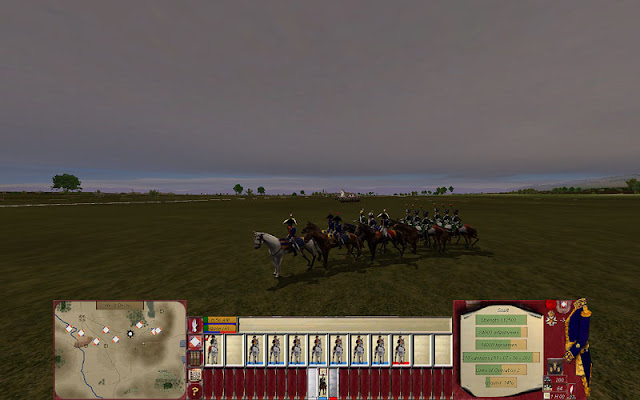Side note: I'm having a hell of a time at work and thus the lack of entries. Thanks for checking the blog anyway, folks. Much appreciated! :)
This is a debrief of a custom-made mission. I suck at geopolitics so I will not even attempt to think about a "big picture" type of background for this mission. The mission portrays the tip of the spear of US Army forces hastily advancing towards Gagra, Abkhazia. Irregular forces, equipped with hardware seized from the Georgian Army, are slowly retreating west and attempting to stand firm at every town they get into. The US westward push has been halted after a US Cavalry troop stops to rearm. Human intelligence (HUMINT) teams behind enemy lines have spotted irregular forces in a civilian truck shop near Gagra getting busy on a platoon of T-80s. These tanks will likely be moved 28 kilometers to the front lines within this hour.
Tactical situation. Note that couple of SA-11 launchers still active after the day of battle.
The day is coming to an end and it is imperative to destroy those tanks before they reach the front lines. After heavy fighting, the only air assets available at this time are a couple of A-10s. A team of special operation forces (SOF) located in the slopes of the Caucasus mountains has a panoramic view of the battlefield can provide fire coordination.A brief remark on the mission we are to fly. If we would be flying US Army Apaches this mission would be simply called a "spoiling attack". Now that we are flying for the US Air Force, this type of mission would open a hell of a discussion. This is not close air support (CAS) because the enemy T-80s are not in contact with friendly troops (that's what we will try to avoid!). In old times (up to the Gulf War) this mission would be called "battlefield air interdiction" (BAI). But the US Air Force, in all its wisdom has slashed this type of missions from its doctrine and now calls it simply "air interdiction". There is more than wording behind all this. The elimination of BAI from the USAF doctrine has some spins that are more like a soap opera. The US Army/USAF inter service friction at the level of command that deals with funds procurement and doctrine writing is still alive and well. If the map above would be made up to military standards, a line called "fire support coordination line" (FSCL) would be drawn somewhere west of the "forward line of own troops" (FLOT, the line located west of the US Cavalry troop in the map above). The FSCL is a magic line: in the space between the FLOT the FSCL, the Army commander in the ground has the control of fires coming out from any gun from anybody. Control is the keyword here. Control shapes tactics, tactics shape doctrine and doctrine shapes procurement. Put some clueless senator into the mix and the very future of the aircraft you are flying is at risk.
Enough digression. Let's take a look at the battlefield. The picture below shows the enemy troops disposition as seen from their point of view.
In the foreground, the position of the enemy tanks. These will soon move towards the frontline (in the background of the picture) using the small valley located between the Caucasus mountains (left) and the small hills in the right. The approximate positions of enemy infantry teams are also indicated. Enemy infantry is known to have portable, IR guided missiles. Finally, two SA-11 launchers (one located near the mountains, the other one near the coast) provide a moderate umbrella of defense against air attack. A very dominant terrain feature, the "Death Canyon" is also indicated.
Coming up next: mission planning.
Cheers,






















